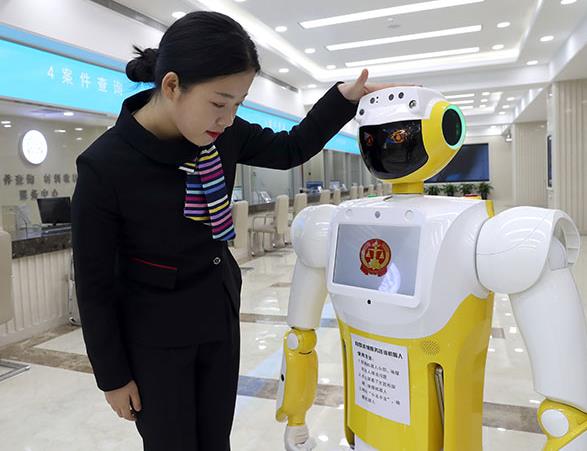The Communist Party of China (CPC) is set to hold its 19th National Congress this month. The five-yearly political event is expected to pave the way for China’s future development.
During the year, 2,287 delegates have been selected to attend this year’s congress to be held in Beijing starting Oct. 18.
Attendees will include high-ranking government officials, Party leaders, and military officers as well as grassroots Party members from “frontline production and manufacturing” such as workers, farmers, technicians, nurses and teachers.
According to a circular issued by the CPC Central Committee in November 2016, frontline workers should account for no less than one-third of the delegates.
A total of 771 grassroots delegates have been selected from various social sectors, accounting for 33.7 percent of the total, up by 3.2 percentage points from five years ago.
The voices of grassroots delegates, especially those who have made achievements in reforms, scientific innovation and poverty alleviation, are expected to gather wisdom and increase the strength of China’s overall reform across all social sectors.
While these delegates all share their belief in Marxism and contribution to the people, each has a story to tell.
Internet celebrity
For some of China’s college students, Party theory classes may not be a fun part of their campus life. But this is not the case for students at Nanjing University of Aeronautics and Astronautics.
Xu Chuan, a 35-year-old associate professor, has made the university’s Party classes popular by blending in vivid anecdotes and a touch of humor.
“Many of our graduates will go on to work in China’s national defense. Therefore Party classes are very important for them to nurture political awareness to better serve our country,” Xu said.
“I understand what interests young students. Instead of throwing rigid theories at them, I use my own experience to give the classes a personal spin,” he added.
To attract a wider audience, Xu regularly publishes articles online promoting the CPC ideals. He also uses his WeChat social media account to give advice to college students and young adults on topics such as education, careers and relationships.
In 2016, Xu’s article “Why should I join the CPC?” went viral garnering more than one million views after it was forwarded by the official WeChat accounts of CPC authorities.
“When students are asked about why they joined the Party, they tend to come up with very similar answers,” the article states. “They always say their grandfathers were the source of their Communist faith. It seems to me they all have the same grandfather.”
“If a person is not ready to sacrifice for the people and endure hardships, he or she is not qualified to be a CPC member,” the article goes on.
Xu’s WeChat account now has nearly 200,000 followers.
In June this year, he was selected to attend the 19th CPC National Congress.
“With a social media following of nearly 200,000 young people, I will try my best to pay attention to the needs of Chinese youth,” said Xu. “I will also inform them of information released at the congress to help them with their studies or career.”
Denim innovator
Some of the delegates deal with things that are more concrete.
Deng Jianjun is the technical director of Black Peony (Group) Co. Ltd., a Chinese manufacturer of denim, yarn-dyed fabrics and garments.
The process of making denim involves dyeing yarn with a dyeing and sizing machine.
In the 1980s, all machines had to be paused during the dyeing process for components to be replaced due to a technical defect.
Every pause wasted more than 300 meters of yarn, which was a common problem for global denim industry.
Determined to solve the problem, Deng spent more than a year visiting Chinese and foreign experts, then inventing new designs to improve the machines.
Deng’s efforts paid off. In the early 1990s he made a series of improvements that allowed his company’s dyeing and sizing machines to be able to operate without interruption, which has saved the company more than30 million yuan.
Since 1994, Deng’s team has made hundreds of updates to the company’s machinery to increase production capacity saving more than 80 million yuan.
As a Party delegate representing workers, Deng has attended the last two congresses. He sees it as his duty to represent the benefits of workers.
“We are currently trying to let machines do more of the work,” Deng said, adding that the aim is to reduce the burden on workers and improve the working environment.
Wheat scientist
One out of every eight mantou, or steamed buns, in China is made from wheat developed by Ru Zhengang.
Ru, a professor at Henan Institute of Science and Technology, is China’s leading agricultural scientist renowned for his expertise in breeding new species of wheat.
Back in the 1980s, when Ru had just graduated from university, China’s wheat crops were mostly species imported from Italy.
Ru took it upon himself to make China independent in terms of wheat. After years of work, he developed the “Bainong-62” and “Aikang-58” species.
The Aikang-58 species has helped increase China’s wheat output by 12.1 billion kilograms.
After being selected as a delegate to this year’s CPC National Congress, Ru feels the weight of his new responsibility.
“Apart from my own research, I will perform my duty as a delegate to work with more people to build our nation,” Ru said.
